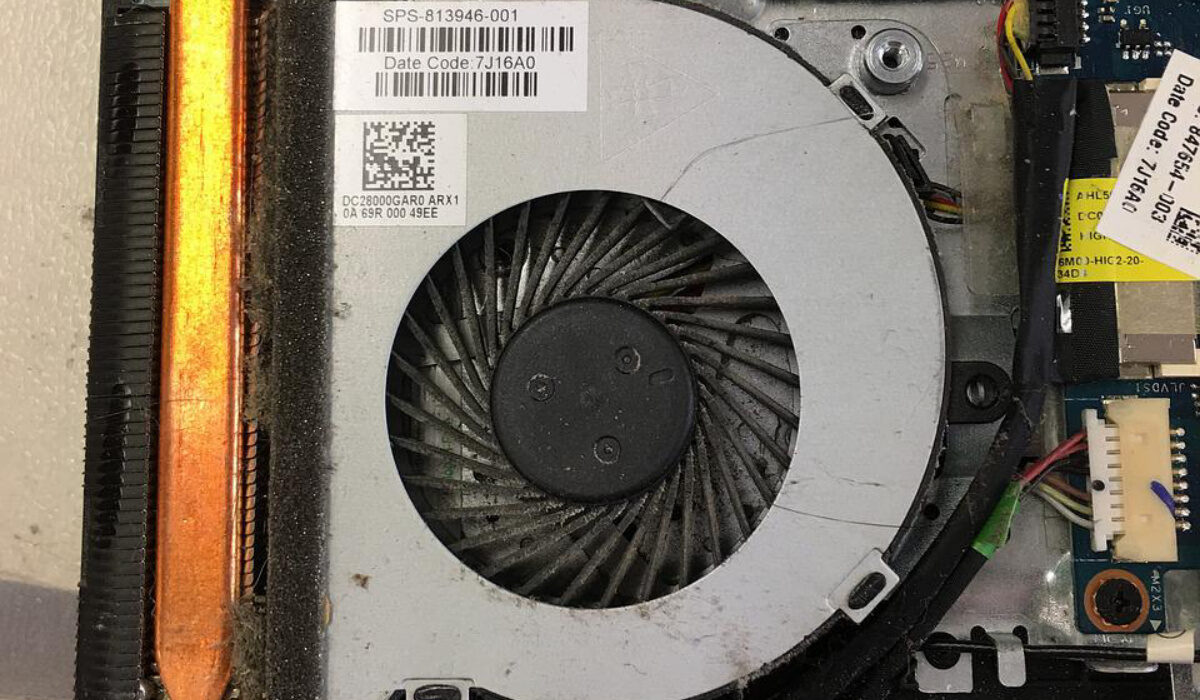If, however, it’s already past the prevention stage for you, and you’re – at this point – dealing with overheating issues on your PC, there’s no need to stress. There are some easy steps you can take to fix the issue, but first, you need to understand how to tell when your PC is overheating.
How do I Know When my PC is Overheating?
There are a few telltale signs that should let you know when your PC starts to overheat. If your PC feels rather warm to the touch, if its fans are running hard, or if you notice sudden shutdowns or screen freezes, then your computer has most likely already begun to overheat. Also note that when you’re prone to executing resource-intensive tasks such as gaming or video editing, CPU overheating problems are more likely to occur with your PC. In truth, overheating is a problem expected with all gadgets. Manufacturers know this, and since overheating can be quite harmful to both software and hardware, most PCs are equipped with heat-dispersing and ventilation components as a precaution. However, these might still not be enough to prevent overheating (especially due to our own methods of handling our gadgets), so what can you do to fix the issue when it arises? Clean your PC If you haven’t dusted or cleaned your computer in a while, grime is most likely to blame for your computer heating up. Dust tends to block key parts of the computer that air should normally circulate through, and this can lead to overheating. Thankfully, a desktop computer is pretty easy to clean, even though most laptop owners might choose to get their devices serviced at a repair facility. However, the steps we’ve listed below should help you clean your computer just fine if you wish to do so on your own:
Turn off the PC entirely and unplug it first.Next, open the lid, you ought to be able to see dust. You can use a leaf blower or a can of compressed air to clean it up (at slow speed). Blow air into the primary computer parts, paying specific attention to the fans, from the front and back.To clean the confined spaces, you can also use cotton buds. The goal is to remove any blockage brought on by dust, so don’t panic if you can’t get it sparkling clean.
Once you get rid of the dust and grime, ventilation should be restored, and the overheating issue will reduce considerably. Confirm that the Fans are Working Your computer will become overheated if the fans aren’t functioning properly or can’t circulate air for some reason. If this is the case, you’ll need to take it to a repair shop to have it mended. It’s easy to determine whether the fans in your PC are operating correctly or not. The PC begins to operate as soon as you push the power button, and you should hear a pleasing “vroom” sound. That is the sound of the internal fans, which will initially operate at full speed before slowing down as the computer boots. There is a possibility that the fans aren’t operating properly if you can’t hear the sound when the PC first turns on or if you notice that it is weaker than it’s supposed to be. Once you confirm that the issue is with the fan, take your PC to a reputable computer repair shop. The overheating issue should stop when your fans begin to work normally again. You can also open up your computer to check the fans’ functionality if you’d like to investigate further. If opening the computer scares you, simply use a flashlight to check the ventilation holes for any active fans. Before the heat melts the components, you should take it to a repair shop right away if you can’t see any fan movement. Reapply Thermal Paste A highly conductive substance called thermal paste is typically used between CPU/GPU and metal heatsinks in your PC. This paste makes sure that the heat is effectively dispersed from the computer. The cooling system’s efficiency will certainly be impacted if this substance expires in your PC. Also note that the thermal paste on your computer will dry out eventually, especially if you frequently overtax your system. So, if you notice your PC overheating, reapplying thermal paste is one of the beneficial actions that can stop it. You will need to disassemble your gadget to change the thermal paste because it is housed inside the computer. If you’re not an expert, we’ll advise that you ask a skilled technician to complete this process on your behalf. Reapplying thermal paste typically helps to reduce heat buildup, especially on older computers. As such, you’ll find it very helpful in stopping overheating issues in your PC. Some other actions you’ll find beneficial to stop overheating include:
Using a portable cooling pad for your PCUnderclocking, rather than overclocking your CPU and GPURemoving blockages to your PC’s ventilation holes
These might seem really basic, but they contribute significantly to reducing overheating in PCs. In conclusion, the more your computer heats up, the more significant the harm that will be caused to its components. As such, you should never overlook an overheating computer if you value your device and the data it contains. Take note of all the things you can do to fix your overheating computer, and also follow the instructions in the first part of this guide to prevent further overheating in the future, Don’t forget to recommend this article to your family and friends so they can also benefit immensely from it.
Don’t miss our mobile phone reviews.Follow our news on Google News.Join our WhatsApp Group, to be notified of the most important articles and deals,Follow us on Instagram, Facebook, Twitter, and YouTube.
